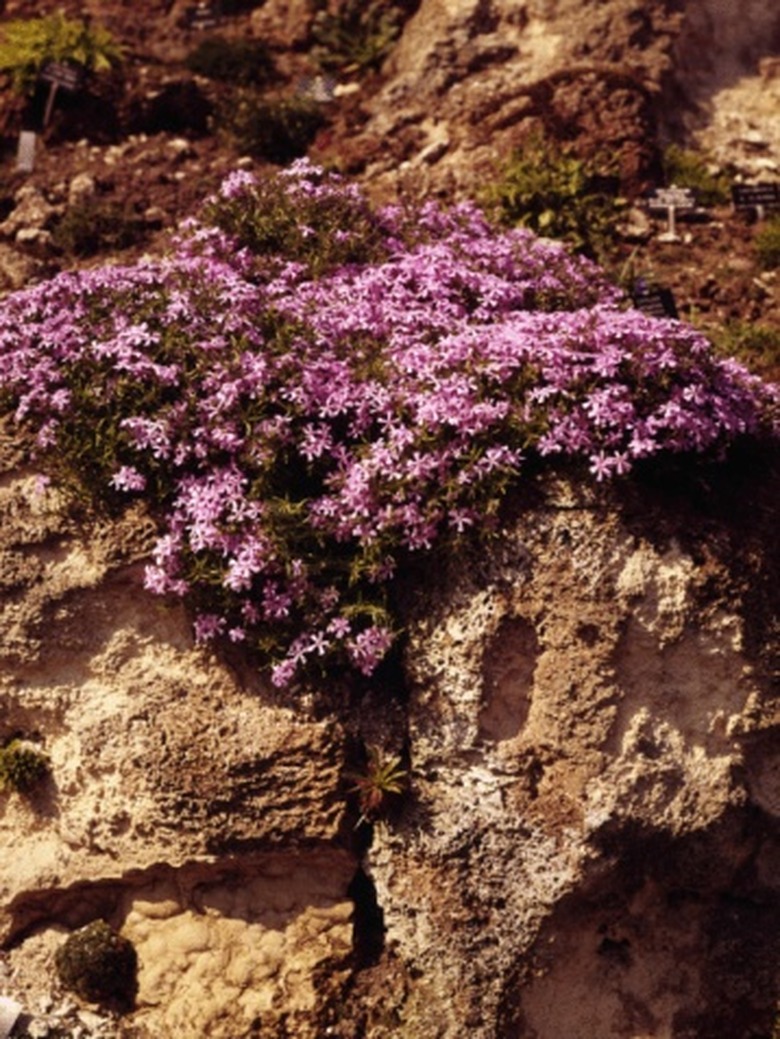Are Mountain Pinks Perennial Flowers?
Several plants are known by the common name "mountain pinks." Which plant you mean depends in part on where you live; the term means different things in Texas, in England, in the eastern United States and in the United States as a whole. Some mountain pinks are annuals or biennials; others are perennials.
Centaurium
When gardeners in Texas or Oklahoma refer to mountain pinks, chances are they're referring to one of two types of native wildflowers, members of the genus Centaurium. Centaurium beyrichii is known as quinineweed as well as mountain pinks, and is an annual wildflower native to Texas and Oklahoma. The pink, star-shaped flowers on this mountain pink form a round mass, and the plant grows best in dry, stony ground. Centaurium calycosum flowers are held in a loose cluster; this wildflower grows as both an annual and as a biennial and prefers moist soil. It's native to Missouri as well as Texas and Oklahoma and is also known as the Arizona centaury. The genus name was changed from Centaurium to Zeltnera in 2004, but most references, including the U.S. Department of Agriculture database, still use the old name.
Phlox Subulata
Creeping or moss phlox is one of the first perennials to bloom in the spring. Phlox subulata is native to the eastern United States, where it's still sometimes referred to by its older common names of mountain or ground pinks. This fine-textured, evergreen perennial forms a dense mat and is covered by five-petaled flowers in shades of blue, pink or white. The needle-like leaves are green in the summer but turn purplish-black in winter. Phlox subulata is hardy throughout U.S. Department of Agriculture plant zones 3 to 9.
Dianthus Armeria
Dianthus armeria is an escaped garden plant from Europe that has naturalized throughout most of the United States and Canada. An annual referred to as Deptford pinks as well as mountain pinks, this airy plant grows 8 to 24 inches tall and has notched, five-petaled flowers in midsummer. The pink flowers are spotted and have the typical dianthus toothed edges. It's often found in disturbed areas such as along roadways.
Dianthus Gratianopolitanus
The common Cheddar pinks, Dianthus gratianopolitanus (formerly known as D. caesius), are also known in England by the common names cliff pinks, clove pinks, sweet pinks, and of course, mountain pinks. Hardy in North America in zones 3 through 8, these mat-forming perennial dianthus have gray-green foliage and pink flowers in late spring and early summer. Like many alpine plants, they grow best in an alkaline soil. The cultivar "Bath's Pink" is particularly free-flowering if deadheaded. "Spotty" has red flowers with white polka dots and "Tiny Rubies" are dwarf plants with pink flowers.
